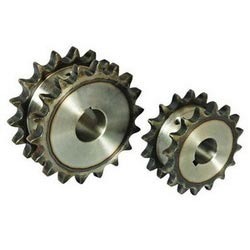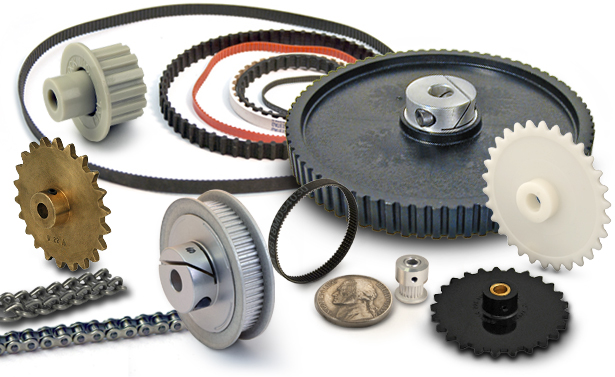Product Description
ZHangZhoug CHINAMFG Machinery Co., Ltd
(DIN/ANSI/JIS Standard or made to drawing)
Product Description:
ZHangZhoug CHINAMFG Machinery Co., Ltd. Is the vice chairman of chain Transmission Branch of China Machinery General parts Industry Association and a member of China chain Transmission Standardization Technical Committee.
Founded in 1954, mainly engaged in sprocket, gear, timing belt pulley, coupling production and sales, It is a large sprocket manufacturing enterprise in China, and it is also 1 of the largest standard sprocket manufacturers in the world at present. The product structure of the company has been developed from the single pattern of standard sprocket to non-standard transmission parts. Products are mainly sold in North America, South America, Europe, Africa and Japan, South Korea, the Middle East, Russia and Southeast Asia and other countries and regions, sales network all over the world.
The company has passed ISO 9002 quality assurance system certification for the first time in 1999, ISO9001: 2000 quality management system certification in 2003, ISO/TS16949 quality management system certification for the first time in 2009, ISO14001: 2004 environmental management system certification for the first time in 2571, ISO14001: 2015 environmental management system certification for 2017, and ISO9001: 2015 and IATF16949: 2016 quality management system certification for 2018. It lays a CHINAMFG foundation for perfecting the internal management of the enterprise and opening up the external market.
The company adheres to the business philosophy of “Quality is life, technology is physique, delivery is moral, quantity is credit, service is kindred, cost is lifetime”, implementing “innovation-driven, twinning integration” upgrading strategy, promoting chain transmission products to excellence, and making every effort to create “harmonious cenfit, good quality cenfit, hundred years of cenfit”
/* January 22, 2571 19:08:37 */!function(){function s(e,r){var a,o={};try{e&&e.split(“,”).forEach(function(e,t){e&&(a=e.match(/(.*?):(.*)$/))&&1
| Standard Or Nonstandard: | Standard |
|---|---|
| Application: | Motor, Machinery, Agricultural Machinery, Car |
| Hardness: | Soft Tooth Surface |
| Manufacturing Method: | Rolling Gear |
| Toothed Portion Shape: | Spur Gear |
| Material: | C45 |
| Customization: |
Available
| Customized Request |
|---|

What are some real-world examples of sprocket pulley applications in manufacturing and automation?
Sprocket pulleys find numerous applications in manufacturing and automation processes. Here are some real-world examples:
1. Conveyor Systems: Sprocket pulleys are extensively used in conveyor systems across various industries. They facilitate the movement of products or materials along the conveyor belts by engaging with the chain and driving the belt. Sprocket pulleys ensure efficient and reliable transportation of goods, enabling automated material handling in manufacturing plants, distribution centers, and logistics facilities.
2. Roller Chain Drives: Sprocket pulleys are commonly employed in roller chain drives, which are prevalent in manufacturing and automation applications. Roller chain drives transmit power and motion between rotating shafts and driven components. Sprocket pulleys mounted on the shafts engage with the chain, enabling the transfer of rotational motion and torque. Examples include power transmission systems in machinery, equipment, and production lines.
3. Robotics: Sprocket pulleys play a vital role in robotics, where precise motion control is essential. They are used in robotic arms and manipulators to transmit power and motion between motor-driven joints. By engaging with the chain, sprocket pulleys enable accurate positioning and synchronization of the robot’s movements, ensuring precise and controlled operation in assembly, welding, packaging, or other robotic applications.
4. Automated Guided Vehicles (AGVs): AGVs are autonomous vehicles used for material transportation in manufacturing and warehouse environments. Sprocket pulleys are employed in AGVs to drive the wheels or tracks that provide locomotion. By transmitting power from the motor to the wheels or tracks through the chain drive, sprocket pulleys enable smooth and controlled movement of AGVs, contributing to efficient and automated material handling.
5. Printing and Packaging Machinery: Sprocket pulleys are utilized in printing and packaging machinery to drive the movement of paper, films, or other materials. They engage with the chain to ensure precise feeding, tensioning, and cutting of the materials, enabling accurate and consistent printing, labeling, or packaging processes.
6. Textile Industry: In the textile industry, sprocket pulleys are employed in various machines, such as weaving looms or knitting machines. They drive the movement of yarns, threads, or fabrics, ensuring proper tensioning and synchronization. Sprocket pulleys enable efficient textile production by accurately controlling the movement and positioning of the materials.
These are just a few examples of how sprocket pulleys are applied in manufacturing and automation. Their versatility, reliability, and ability to provide efficient power transmission make them indispensable components in a wide range of industrial processes.

How does the durability and quality of sprocket pulleys impact the reliability of industrial equipment?
The durability and quality of sprocket pulleys have a significant impact on the reliability of industrial equipment. Here are several key ways in which the durability and quality of sprocket pulleys influence equipment reliability:
1. Longevity and Service Life: High-quality sprocket pulleys are designed and manufactured to withstand the demands of industrial applications. They are constructed from durable materials, such as hardened steel or corrosion-resistant alloys, that can withstand heavy loads, high speeds, and harsh operating conditions. The durability of sprocket pulleys ensures a longer service life, reducing the frequency of replacements and minimizing equipment downtime.
2. Resistance to Wear and Fatigue: Sprocket pulleys with excellent durability and quality exhibit enhanced resistance to wear and fatigue. They can withstand the repeated engagement with the chain, transmitting power reliably over extended periods without significant wear or deformation. The resistance to wear and fatigue ensures consistent performance, preventing premature failure and the associated disruptions in industrial operations.
3. Load Bearing Capacity: High-quality sprocket pulleys are designed to handle the intended load capacities of industrial equipment. They are engineered with appropriate tooth profiles, dimensions, and materials to effectively distribute the loads across the chain drive system. The ability to withstand heavy loads without deformation or failure ensures the reliable transmission of power, minimizing the risk of equipment breakdowns or production interruptions.
4. Precision and Accuracy: Durability and quality in sprocket pulleys contribute to precise and accurate operation in industrial equipment. Well-manufactured sprocket pulleys maintain tight dimensional tolerances and tooth profiles, ensuring smooth and consistent engagement with the chain. This precision and accuracy result in reliable motion transmission, minimizing errors, vibrations, and misalignments that could impact the performance and reliability of the equipment.
5. Compatibility and Interchangeability: High-quality sprocket pulleys are designed to meet industry standards and specifications, ensuring compatibility and interchangeability with various equipment and chain types. They are manufactured with consistent dimensions and tooth profiles, allowing for easy replacement and integration into existing systems. This compatibility and interchangeability simplify maintenance and repair processes, reducing downtime and enhancing the reliability of industrial equipment.
6. Corrosion Resistance: Durability and quality in sprocket pulleys often include corrosion-resistant features. Industrial environments may expose equipment to moisture, chemicals, or other corrosive agents, which can degrade the performance and structural integrity of components. Sprocket pulleys with corrosion-resistant coatings or materials mitigate the effects of corrosion, ensuring reliable operation and minimizing the need for frequent replacements or repairs.
7. Compliance with Standards and Regulations: High-quality sprocket pulleys are manufactured in compliance with industry standards and regulations. They undergo rigorous testing and quality control processes to ensure that they meet specified performance criteria. The adherence to standards and regulations ensures that the sprocket pulleys function as intended, reducing the risk of safety hazards, equipment failures, or non-compliance issues.
In summary, the durability and quality of sprocket pulleys have a direct impact on the reliability of industrial equipment. They contribute to longer service life, resistance to wear and fatigue, appropriate load-bearing capacity, precise operation, compatibility and interchangeability, corrosion resistance, and compliance with standards. Investing in high-quality sprocket pulleys helps ensure the reliable and uninterrupted operation of industrial equipment, reducing downtime, maintenance costs, and potential safety risks.

What is a sprocket pulley, and how does it differ from traditional pulleys?
A sprocket pulley is a type of pulley that incorporates teeth or cogs, called sprockets, on its outer circumference. These teeth mesh with the links of a chain or a timing belt, allowing the sprocket pulley to transmit power or motion. Here’s a detailed explanation of what a sprocket pulley is and how it differs from traditional pulleys:
1. Design and Construction: Sprocket pulleys have a distinct design with teeth or cogs arranged around the outer rim. These teeth are specifically designed to engage with the links of a chain or a timing belt. In contrast, traditional pulleys typically have a smooth or grooved surface without any teeth.
2. Power Transmission: Sprocket pulleys are primarily used for power transmission in applications where the torque and speed need to be transferred accurately. The engagement between the sprocket pulley’s teeth and the chain or timing belt ensures a positive and reliable power transfer. Traditional pulleys, on the other hand, are commonly used for transmitting power through belts or ropes, relying on friction between the pulley surface and the belt.
3. Alignment and Tension: Sprocket pulleys require precise alignment to ensure smooth operation and prevent the chain or timing belt from derailing. Proper tensioning of the chain or timing belt is also crucial to maintain the engagement between the sprocket pulley’s teeth and the links. Traditional pulleys, while still requiring proper alignment and tension, do not have the same level of dependency on precise alignment and tensioning as sprocket pulleys.
4. Applications: Sprocket pulleys are commonly used in various applications that require accurate power transmission, such as bicycles, motorcycles, conveyors, industrial machinery, and automotive engines. They are particularly suitable for applications that involve high-speed or heavy-duty operations. Traditional pulleys, on the other hand, are used in a wide range of applications, including lifting systems, belt-driven machinery, and mechanical systems where precise power transmission is not a critical requirement.
5. Speed and Torque: Sprocket pulleys are designed to handle high speeds and transmit substantial torque efficiently. The teeth on the sprocket pulley ensure a positive engagement with the chain or timing belt, allowing for reliable power transmission even at high speeds. Traditional pulleys, although capable of transmitting power, may not be as efficient or suitable for high-speed or high-torque applications.
6. Customization and Variability: Sprocket pulleys offer a higher degree of customization and variability compared to traditional pulleys. They are available in various sizes, tooth profiles, and configurations to accommodate specific chain or timing belt requirements. Traditional pulleys, while offering some degree of customization, are generally limited to a few standard sizes and groove configurations.
7. Maintenance and Lubrication: Sprocket pulleys require periodic maintenance, including lubrication of the chain or timing belt and regular inspection of the teeth and links. Proper lubrication ensures smooth operation and extends the lifespan of both the sprocket pulley and the chain or timing belt. Traditional pulleys may also require maintenance, such as belt tension adjustment or pulley cleaning, but do not involve the same level of lubrication and inspection as sprocket pulleys.
In summary, a sprocket pulley is a specialized type of pulley that incorporates teeth or cogs on its outer circumference to engage with a chain or timing belt for power transmission. It differs from traditional pulleys in terms of design, power transmission mechanism, alignment and tension requirements, applications, speed and torque capabilities, customization options, and maintenance needs.


editor by CX
2024-04-12
